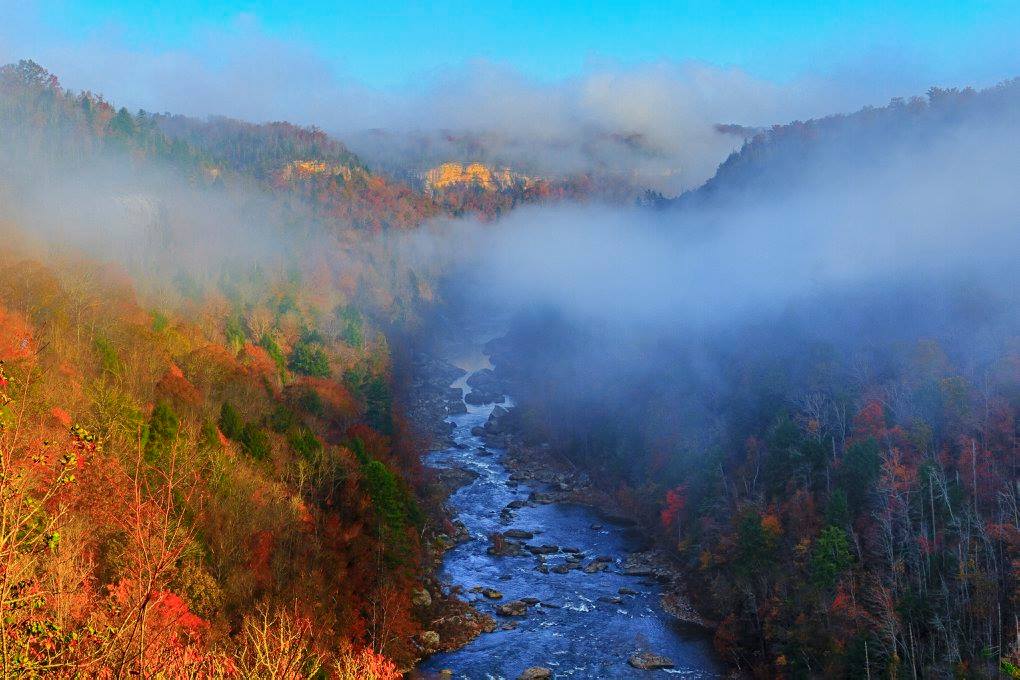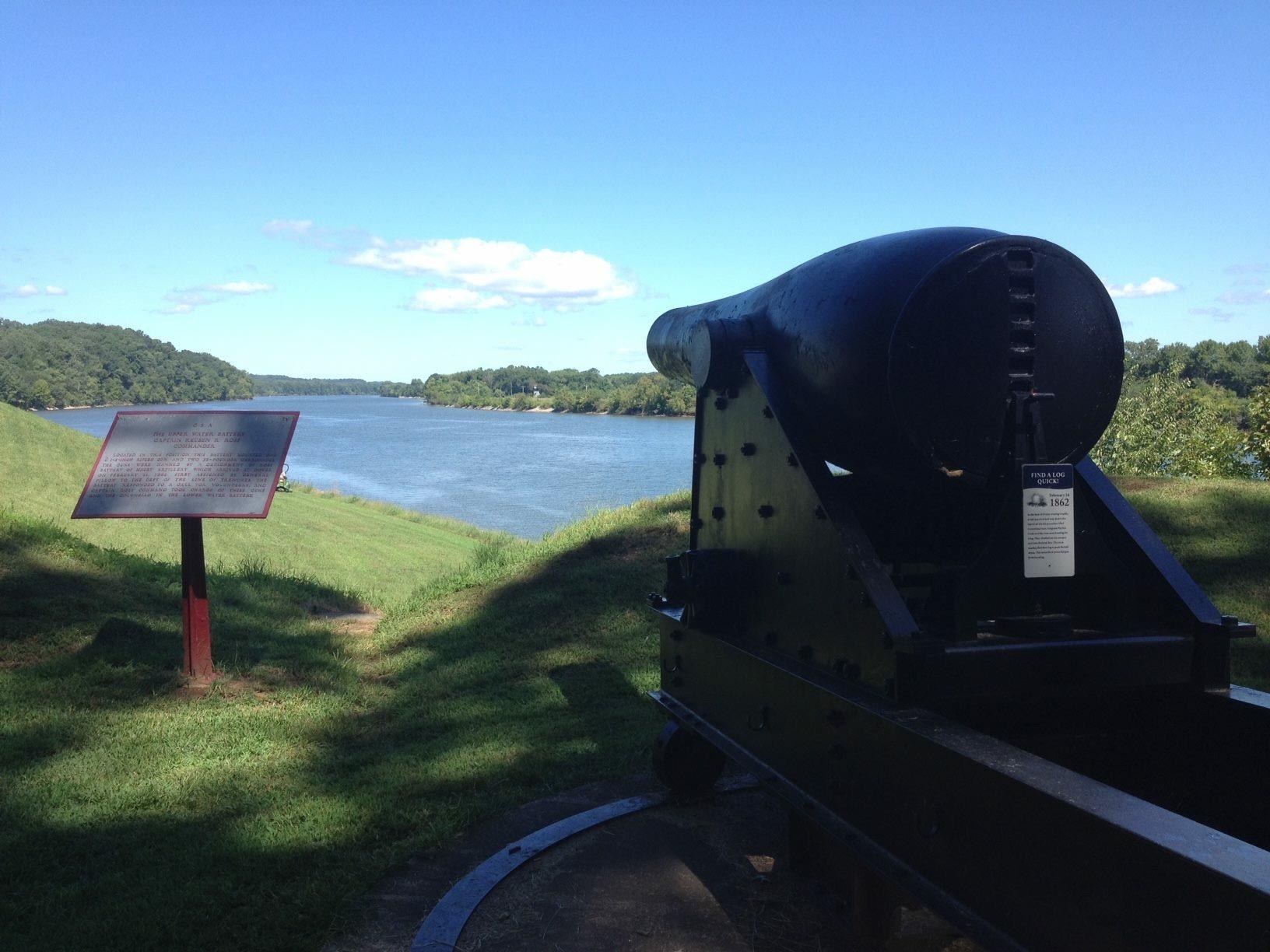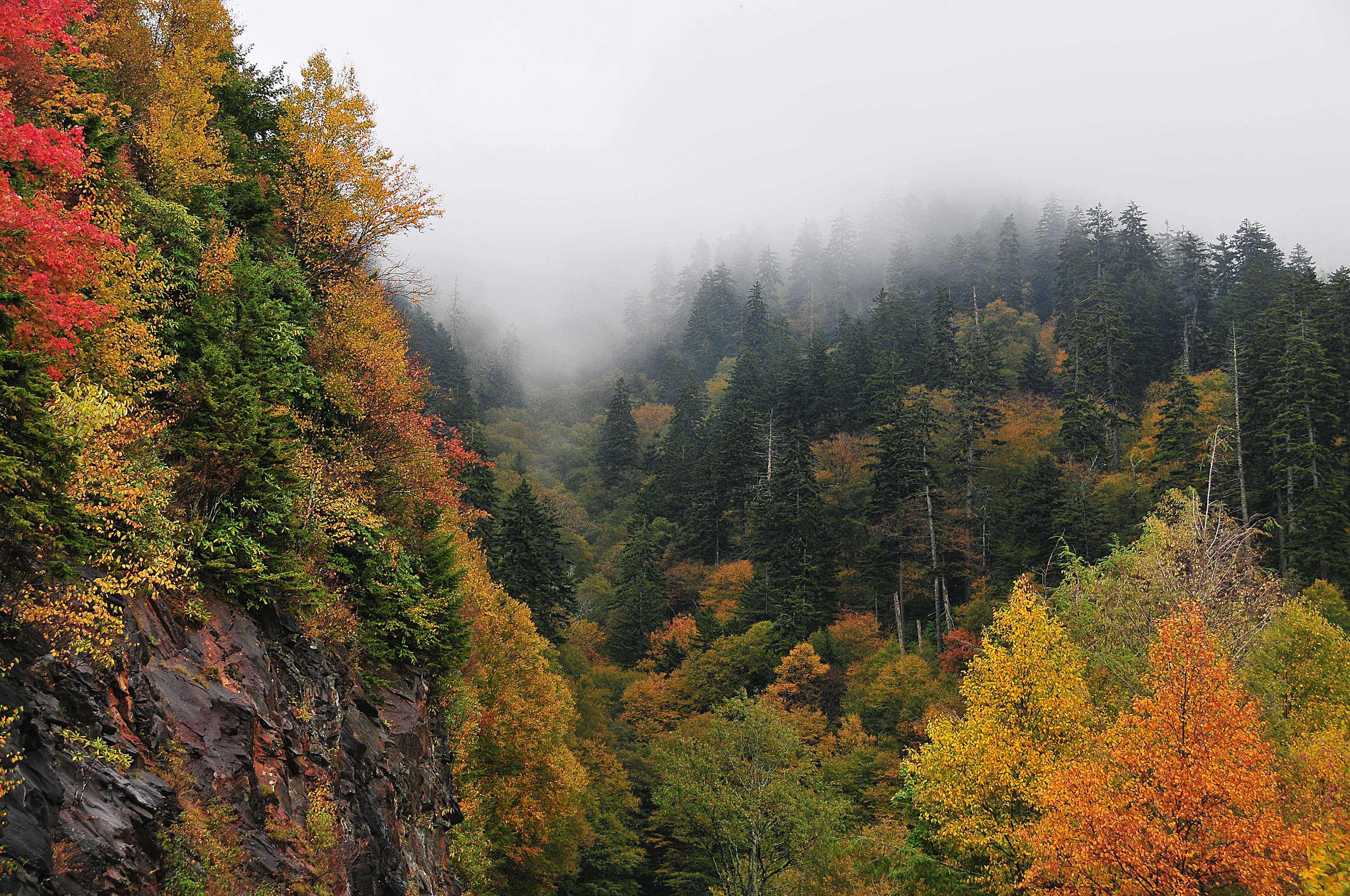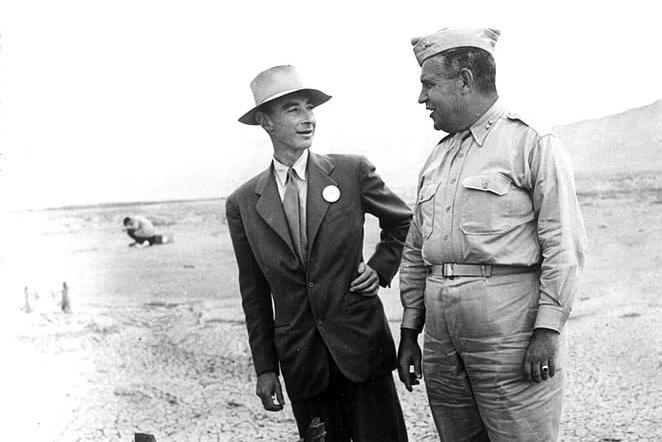
Home of the 17th President from 1851-1875
Andrew Johnson
Andrew Johnson's complex presidency (1865-69) illustrates the Constitution at work following the Civil War. As the President and Congress disagreed on Reconstruction methods, the Constitution served as their guide on balance of powers, vetoes, and im

McAfee Knob is one of the most popular locations along the A.T. to take photographs.
Appalachian
The Appalachian Trail is a 2,190+ mile long public footpath that traverses the scenic, wooded, pastoral, wild, and culturally resonant lands of the Appalachian Mountains. Conceived in 1921, built by private citizens, and completed in 1937, today the

Big South Fork NRRA in Fall
Big South Fork
Encompassing 125,000 acres of the Cumberland Plateau, Big South Fork National River and Recreation Area protects the free-flowing Big South Fork of the Cumberland River and its tributaries. The area boasts miles of scenic gorges and sandstone bluffs,

Living Historians are seen in Kelley Field and in the distance at the Kelley Cabin during the 150th anniversary
Chickamauga & Chattanooga
In 1863, Union and Confederate forces fought for control of Chattanooga, known as the "Gateway to the Deep South." The Confederates were victorious at nearby Chickamauga in September. However, renewed fighting in Chattanooga that November provided Un

Weathered log cabins greet visitors to Hensley Settlement
Cumberland Gap
Cumberland Gap was the first great gateway to the west. Come follow the path of bison, Native Americans, longhunters, and pioneers. Walk where 300,000 people crossed the Appalachians to settle America. Explore 85 miles of trails and 14,000 acres of w

A commanding view of the Cumberland River from the Upper Artillery Battery
Fort Donelson
Brigadier General Ulysses S. Grant was becoming quite famous as he wrote these words following the surrender of Confederate Fort Donelson on Sunday, February 16, 1862. The Union victory at Fort Donelson elated the North, and stunned the South. Within

Fall leaf season is one of the busiest times of year in the park.
Great Smoky Mountains
Ridge upon ridge of forest straddles the border between North Carolina and Tennessee in Great Smoky Mountains National Park. World renowned for its diversity of plant and animal life, the beauty of its ancient mountains, and the quality of its remnan

J. Robert Oppenheimer and Gen. Leslie Groves at the Trinity Test Site.
Manhattan Project
The Manhattan Project is one of the most transformative events of the 20th century. It ushered in the nuclear age with the development of the world’s first atomic bombs. Most of this development took place in three secret communities located in Hanfo

The Potkopinu section, between milepost 17 and 20, follows the historic Old Trace. The "sunken" nature of the trail is due to the footsteps of thousands of travelers between the 1780s and 1820s in the soft loess soil.
Natchez Trace
The Natchez Trace National Scenic Trail is five sections of hiking trail running roughly parallel to the 444-mile long Natchez Trace Parkway scenic motor road. The foot trails total more than 60 miles and offer opportunities to explore wetlands, swam

The Natchez Trace Parkway commemorates a historic travel route that helped build the young United States. The Parkway 444 miles, with plenty of stops to allow you to explore some of the history or enjoy the scenery along the way.
Natchez Trace
The Natchez Trace Parkway is a 444-mile recreational road and scenic drive through three states. It roughly follows the "Old Natchez Trace," a historic travel corridor used by American Indians, "Kaintucks," European settlers, slave traders, soldiers,

Obed in Fall
Obed
The Obed Wild and Scenic River looks much the same today as it did when the first white settlers strolled its banks in the late 1700s. While meagerly populated due to poor farming soil, the river was a hospitable fishing and hunting area for trappers

Hiking sections of the Overmountain Victory Trail is a favorite pastime.
Overmountain Victory
Stretching 330-miles through four states (Virginia, Tennessee, North and South Carolina) the Overmountain Victory National Historic Trail traces the route used by Patriot militia during the pivotal Kings Mountain campaign of 1780. Follow their campai

Ruggles' Battery
Shiloh
Visit the sites of the most epic struggle in the Western Theater of the Civil War. Nearly 110,000 American troops clashed in a bloody contest that resulted in 23,746 casualties; more casualties than in all of America's previous wars combined. Explore

On January 2, 1863, fifty-seven Union cannons fired from this line ending the Battle of Stones River by killing or wounding more than 1,800 Confederates in less than an hour.
Stones River
The Battle of Stones River began on the last day of 1862 and became one of the bloodiest conflicts of the Civil War. The battle produced important military and political gains for the Union, and it changed forever the people who lived and fought here

The museum tells the story of Major Ridge, the influential Ridge family including prominent son John Ridge, Cherokee history, and the Trail of Tears, as well as subsequent history of the home and region.
Trail Of Tears
Remember and commemorate the survival of the Cherokee people, forcefully removed from their homelands in Georgia, Alabama, and Tennessee to live in Indian Territory, now Oklahoma. They traveled by foot, horse, wagon, or steamboat in 1838-1839.